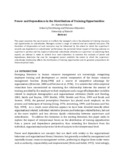| dc.description.abstract | Kenya has at least 42 tribes. Each of these tribes had a unique way of marking the boundary between childhood and adulthood. It is like once pubertal signs emerged, the adolescent was said to be ready for adulthood. Traditional conceptualization of adolescence is not clearly defined, because while puberty marks the beginning of adolescence today, this was not the case in the traditional society. In the traditional society, when a girl started getting her menstrual periods, she was considered mature and arrangements for marriage were started. Modern rites of passage tend to come closer to how modern text books define adolescence. Most boys undertake circumcision after completing primary school, as they wait to join high school. Upon realizing that the hospital ceremony, unlike the traditional one, is lacking in complementary teachings, some Churches have organized teachings prior to circumcision. For girls, after circumcision for them was banned, alternative rites of passage (ARPs) are being instituted, most often targeting urban girls, but these, too, raise questions: Do alternative rites of passage fulfill the same functions for modern society that traditional ceremonies once fulfilled? And, if they do so for girls, is there reason to believe that they ought to be developed for both genders? This paper examines self-reports of Kenyans spanning three generations regarding social roles and identity-seeking among those who did (primarily older men) and did not (primarily younger men and women of all ages) participate in traditional initiation ceremonies. | en_US |

